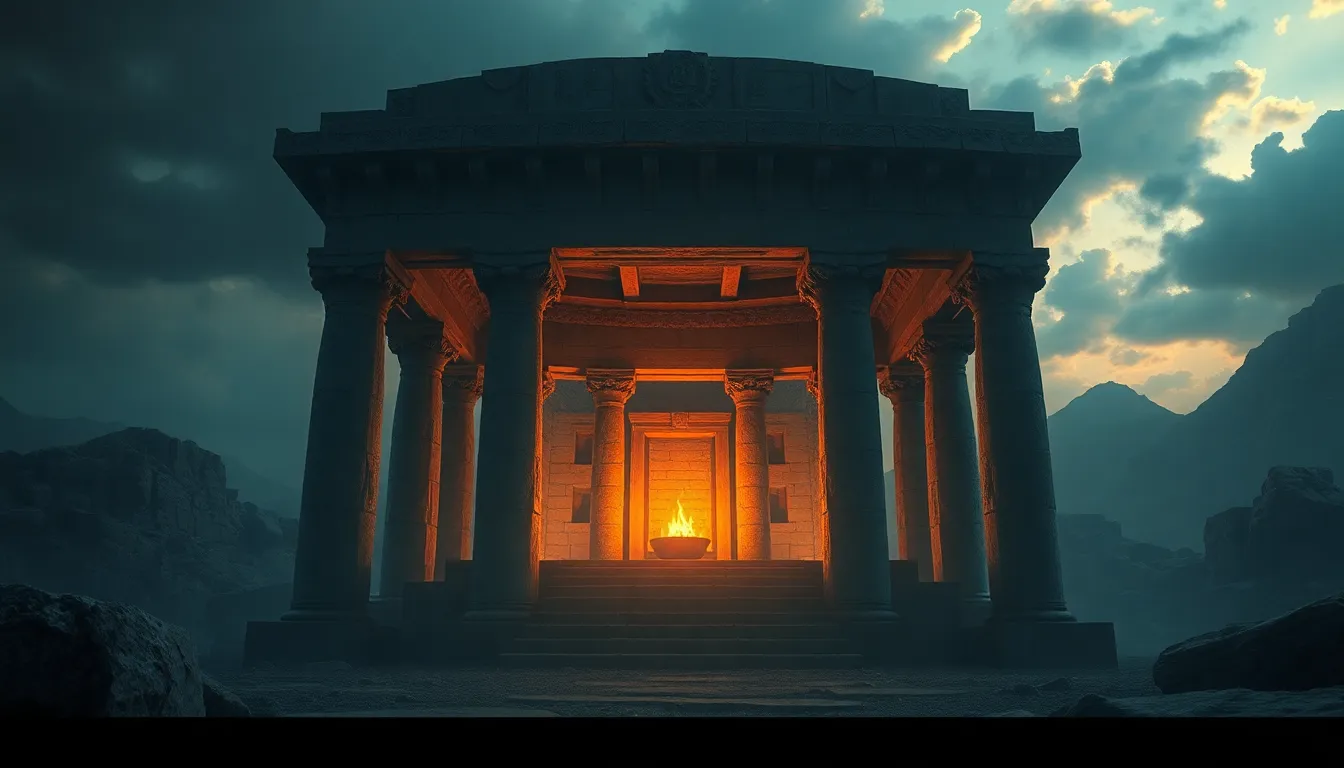The Enigmatic Altars: Sacred Sites of Ancient Worship
I. Introduction
Altars have played a pivotal role in the spiritual and religious practices of ancient cultures. These structures, often elaborately designed, served as platforms for offerings and rituals, marking them as sacred sites of worship. The significance of these altars transcends mere functionality; they embody the beliefs, values, and community identities of the civilizations that created them.
This article will explore the historical significance of altars, the various types, notable sacred sites, associated rituals, symbolism, archaeological discoveries, their relevance in modern contexts, and the legends that surround them. Each section will illuminate the profound impact altars have had on human spirituality throughout history.
II. Historical Significance of Altars
Altars have evolved significantly over millennia, adapting to the changing religious landscapes of different civilizations. Initially, altars were simple mounds of earth or stone, but they gradually transformed into complex structures adorned with intricate carvings and designs.
- A. Evolution of altars through different civilizations: From the rudimentary stone altars of prehistoric times to the grand temples of the Greeks and the elaborate altars in Mesoamerica, the evolution reflects the cultural advancements of societies.
- B. Role of altars in ancient religious practices: Altars were central to rituals, serving as a focal point for offerings to deities, ancestors, and spirits.
- C. The connection between altars and community identity: Altars not only served religious purposes but also fostered a sense of belonging and identity within a community.
III. Types of Ancient Altars
Ancient altars can be categorized based on materials, mobility, and regional characteristics.
- A. Stone vs. wooden altars: Stone altars are often more durable and were commonly used in permanent structures, while wooden altars were more portable, allowing for flexibility in worship practices.
- B. Portable vs. permanent altars: Portable altars facilitated religious practices in transient communities, whereas permanent altars were integral to established temples and sacred sites.
- C. Regional variations and their significance: Different cultures developed unique altar styles reflecting their beliefs, environment, and available materials.
IV. Notable Sacred Sites and Their Altars
Throughout history, various regions have been home to remarkable altars that played crucial roles in religious practices.
- A. The Altars of the Maya: Maya altars served not only as platforms for offerings but also as astronomical observatories, integrating their religious practices with celestial events.
- B. Greek Temples: In ancient Greece, altars were integral to temple worship, often located in front of temples, where sacrifices were made to honor gods like Zeus and Athena.
- C. Egyptian Mortuary Altars: These altars were essential in funerary practices, allowing offerings to be made to the deceased as they journeyed into the afterlife.
V. Rituals Associated with Altars
Altars were not merely physical structures; they were central to a variety of rituals that reinforced community ties and cultural beliefs.
- A. Sacrificial offerings: Different types of offerings, including animals, food, and incense, held significant meaning, symbolizing devotion and appeasement of the divine.
- B. Seasonal festivals: Many cultures celebrated seasonal festivals at altars, marking important agricultural cycles or celestial events.
- C. The use of altars in rites of passage: Altars were often involved in significant life events such as births, marriages, and funerals, symbolizing the transition between different life stages.
VI. Symbolism and Artistry of Altars
Ancient altars were often adorned with intricate iconography and inscriptions, reflecting the beliefs of the culture that created them.
- A. Iconography and inscriptions on ancient altars: Many altars featured carvings that depicted deities, mythological scenes, or important historical events, serving both decorative and didactic purposes.
- B. Materials used and their significance: Different materials, such as stone, wood, and metal, were chosen for their symbolic meanings, durability, and availability.
- C. Artistic representations of divine connections: The artistry of altars often aimed to represent the relationship between the divine and the earthly realm, emphasizing the importance of worship.
VII. Archaeological Discoveries and Their Impact
Archaeological excavations have uncovered many altars, providing invaluable insights into ancient cultures.
- A. Significant archaeological sites featuring altars: Sites such as Stonehenge, Chichen Itza, and the Acropolis have revealed much about the religious practices of their respective cultures.
- B. Methods used in the excavation: Modern archaeological techniques, including ground-penetrating radar and stratigraphic excavation, have enhanced our understanding of altars and their contexts.
- C. How discoveries have reshaped our understanding: Findings have often challenged previous assumptions about ancient societies, revealing complexities in their religious practices and societal structures.
VIII. Altars in Modern Context
Despite the passage of time, the significance of altars persists in contemporary spirituality and cultural practices.
- A. Continued relevance: Many modern spiritual practices incorporate altar-like structures, reflecting a continuity of tradition.
- B. Preservation and restoration efforts: Various organizations work to preserve ancient altars and sites, recognizing their cultural and historical importance.
- C. Influence on modern religions: Ancient practices have influenced contemporary religious rituals, showcasing a blend of tradition and modernity.
IX. The Mystique of Altars: Legends and Folklore
Altars are often steeped in myths and stories that enrich their significance beyond the physical realm.
- A. Myths surrounding specific altars: Many altars are associated with legends that explain their origins, purposes, or powers.
- B. Role in local lore: Altars often become focal points in local folklore, serving as symbols of cultural memory and identity.
- C. Altars as symbols of power: In various cultures, altars represent not only divine connection but also political or social power.
X. Conclusion
In conclusion, altars have been central to the spiritual and communal life of ancient civilizations. They are not just physical structures but are imbued with deep symbolic meanings and cultural significance. The legacy of these sacred sites continues to resonate in modern spirituality, reminding us of the enduring human quest for connection with the divine and the community.
The exploration of altars provides a window into the beliefs and practices of our ancestors, highlighting their importance in shaping human history and culture.




